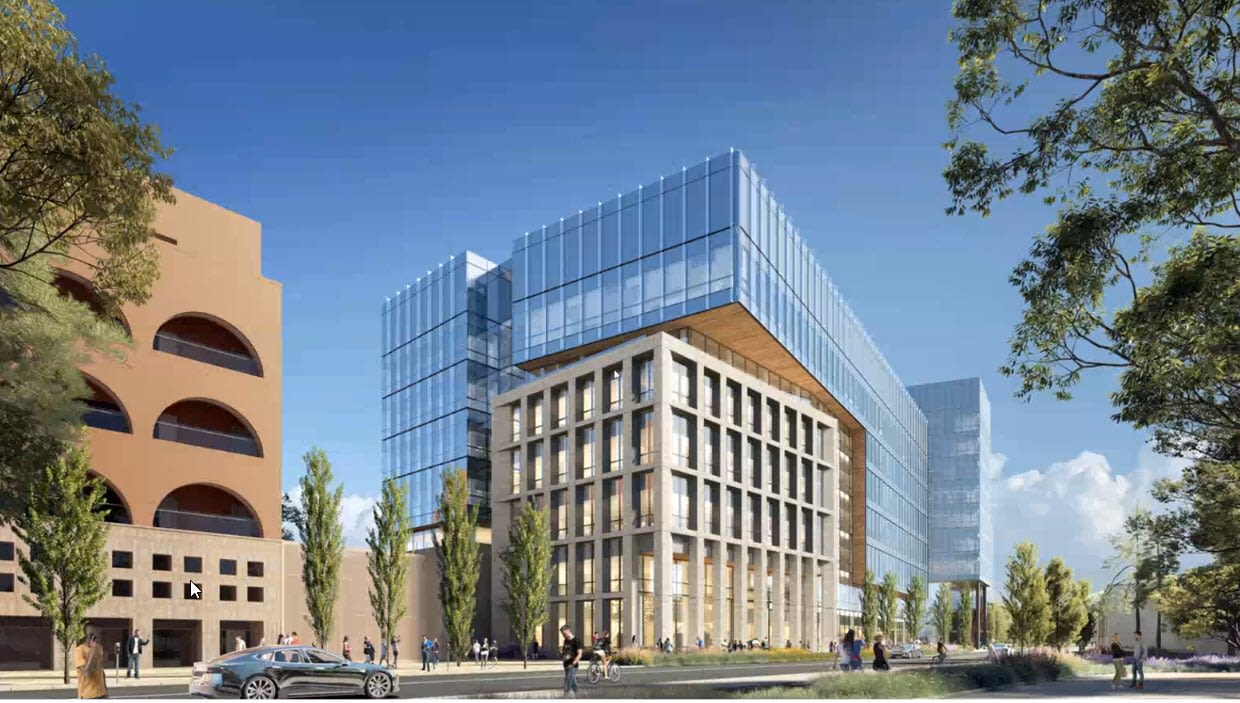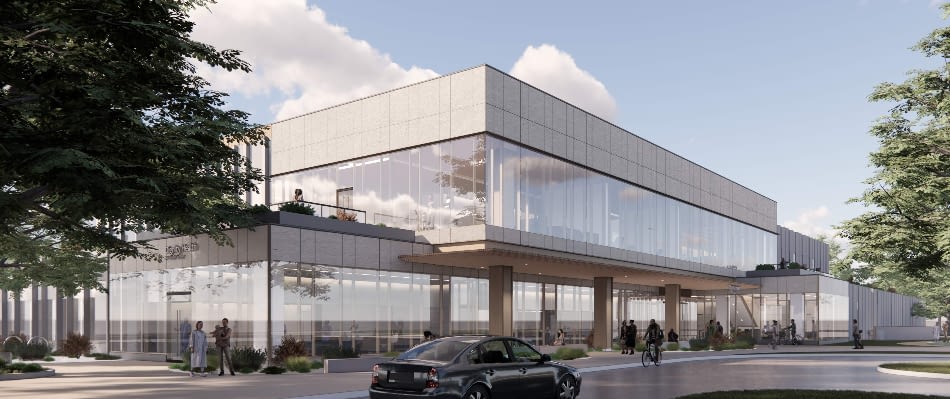Innovative use of precast in a modern design to create an iconic focal point
PROJECT DESCRIPTION
This project sets a new standard for innovative use of precast in modern design. The design pushes the medium to perform at its best, and the close partnership that developed between the architect and Clark Pacific early in the process lasted through the final design and construction phases producing remarkable results. The use of precast successfully meets the design intent to express the relationship of the city to the natural geological monuments of the area.
REGIONAL CONTEXT
The Fresno Federal Courthouse is located in California’s great Central Valley. The greater local context encompasses oak-dotted foothills, sweeping agricultural plains, and the monumental forms of the nearby Sierra mountain range.
PROJECT GOALS
The challenge of modern courthouse design is to find appropriate expression for the building as a representation of the civic institution of the law, and for the Federal Courthouse, as a symbol of the Federal Government in a local place.
GREATER CONTEXT
The shaping of the courthouse draws on the power of familiar local monuments- the nearby Sierra Nevadas. The mass is folded into an L of two slowly colliding volumes, with solid shoulders and sloping tops. At the apex, a grand loggia frames views over green suburbs, tree plantations, and the snow-capped peaks.
The monumentality of the massing is brought to human scale by the patterning of the precast panels. The patterning is a unique response to the specific climate and region and creates a dynamic facade which responds to the changing light and weather.
The combination of vertical and horizontal patterning provides variation in visual texture throughout the day.
SHAPING
The new courthouse is large — a result of its program and the two-story height of the typical courthouse floor- and sufficiently imposing through its sheer mass that the architect sought ways to divide, articulate, open up, and lighten the form.
SYMBOLIC GOALS
The simple but powerful form of the courthouse creates a strong landmark as the tallest building in the city and is a distinguished physical representation of the judicial system. The delicate glass walls play against the solid textured precast concrete. The precast patterning provides a masonry scale to the exterior treatment, strengthening the sculptural quality of the building. The palette of color and material were carefully considered to provide rich variation, yet to enhance the dignified character of the building. To visually anchor the building, the lower floor panels have a more rugged patterning than the upper floors. Two warm colors of precast, inviting yet dignified, differentiate the base from the body of the building.
TECHNICAL ACHIEVEMENTS
- Blast Resistance: Besides a one-of-a-kind artistic expression, the use of precast panels in this project also provided the hardened, secure envelope required for federal government buildings since the aftermath of the Alfred P. Murrah Building bombing in Oklahoma City in 1995. Public buildings are being designed to safely preserve, protect and evacuate occupants. By its nature, reinforced concrete resists penetration while absorbing significant amounts of energy in the envelope and redistributing those loads across a broader area – performance qualities that help protect building occupants from volatile intrusion and help prevent catastrophic structural failure.
- Acoustics The building is located near rail lines, exposed to the frequent sound of train whistles in addition to typical city noise levels. Precast’s acoustical properties effectively block the surrounding sounds.
- Durability: The building has been designed for a lifespan of at least 100 years. Durability as well as beauty factored into the selection of precast concrete for the building skin. The density of precast also helps it to protect the building against moisture intrusion.
ECONOMIC SOLUTIONS
This is a true landmark project which exhibits precast concrete’s design flexibility and the horizon of its application as an efficient and cost-effective building medium. The detailing of the precast panels provides a contemporary interpretation of the richness and scale traditionally provided by stone. However, precast panels prove much more economically feasible in light of the infrastructure required for blast resistance. The panels and the panel layout were designed such that a minimum of panel types could provide a maximum variation in patterning. The innovation of the pattern and its repetition provide a rich texture in an economically optimized process. Minimizing panel types also speeds the production time.
PANEL DESIGN
The patterning of the precast panels gives a human scale to this large, potentially imposing building mass. The panels’ horizontal banding was designed to be symmetrical, so that each panel could be placed rotated 0 and 180 degrees and still work within the composition. By a carefully designed placement scheme, a few panel types give an illusion of a random pattern. The design and construction team worked together to allow the smallest joint size possible between the panels, such that the reveals in the pattern and the panel joints are the same size. Consequently, the panel joints do not detract from the pattern, but become an integral part of the overall design. Another approach to minimizing cost and erection time involved the use of very large panels. The largest size that could be transported by truck determined the upper limit of panel dimensions.
PANEL TYPES
Clark Pacific used innovative and enterprising forming techniques to achieve panel variation and meet the challenging design requirements for the multi-faceted, multi-directional, multi-plane facade
- Typical Panels: Large span architectural precast panels were used to simplify erection, accommodate large story to story heights, allow for more story drift and reduce average square foot skin costs.
- Hybrid Panels: Numerous specialty pieces were designed to speed erection and provide larger single panels that help achieve design blast resistance and story-drift objectives.
- Column Covers: Clark Pacific created full wrap column covers by cold-joint casting two individual panels into L-panels and then erecting in pairs to fully wrap columns in conditions where all sides were exposed to view.
- Precast Louvers: Precast louvers were required to provide hardened yet ventilating cover for the structure’s HVAC systems. Nominally easy to form, the louvers comprised a challenge for the precast in terms of panelizing them with other facade elements. While some sets of louvers were stand alone, others needed to be cold jointed with various other precast elements to achieve the design goals.






